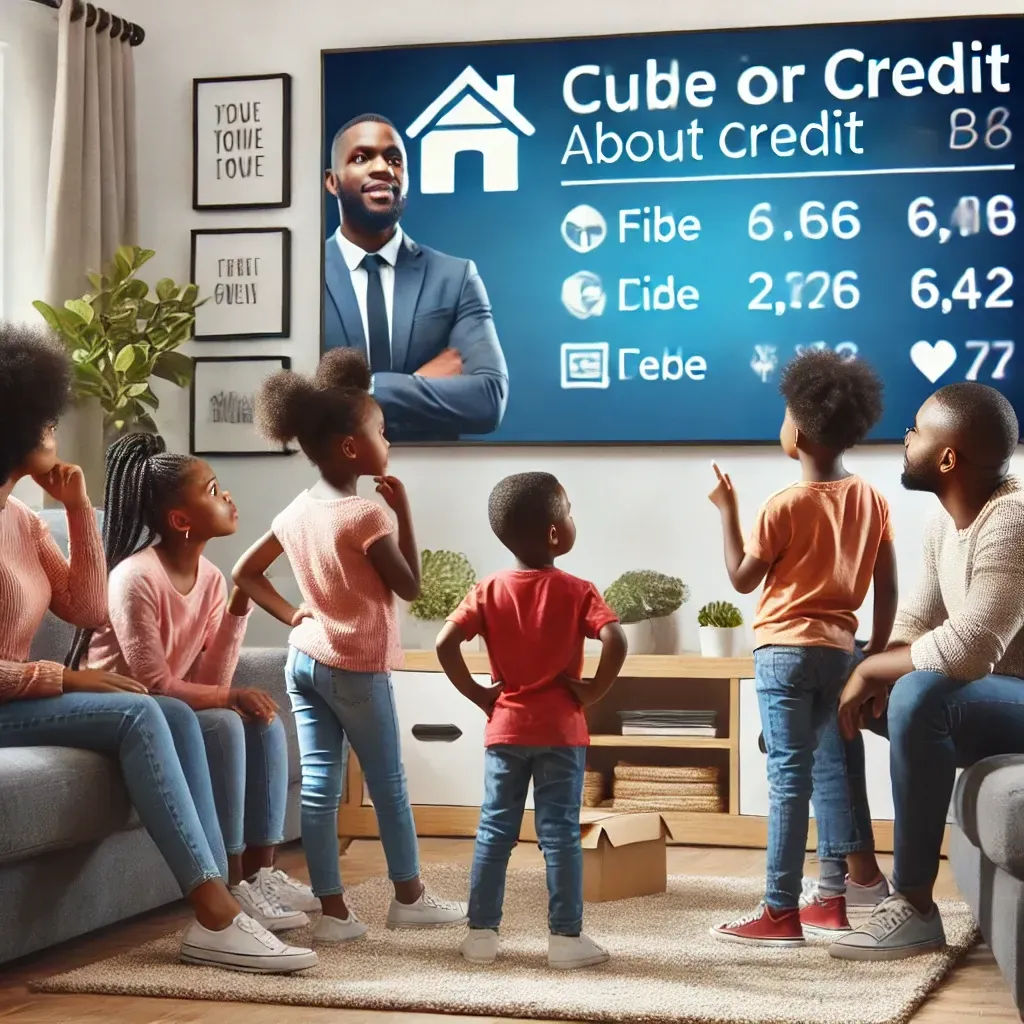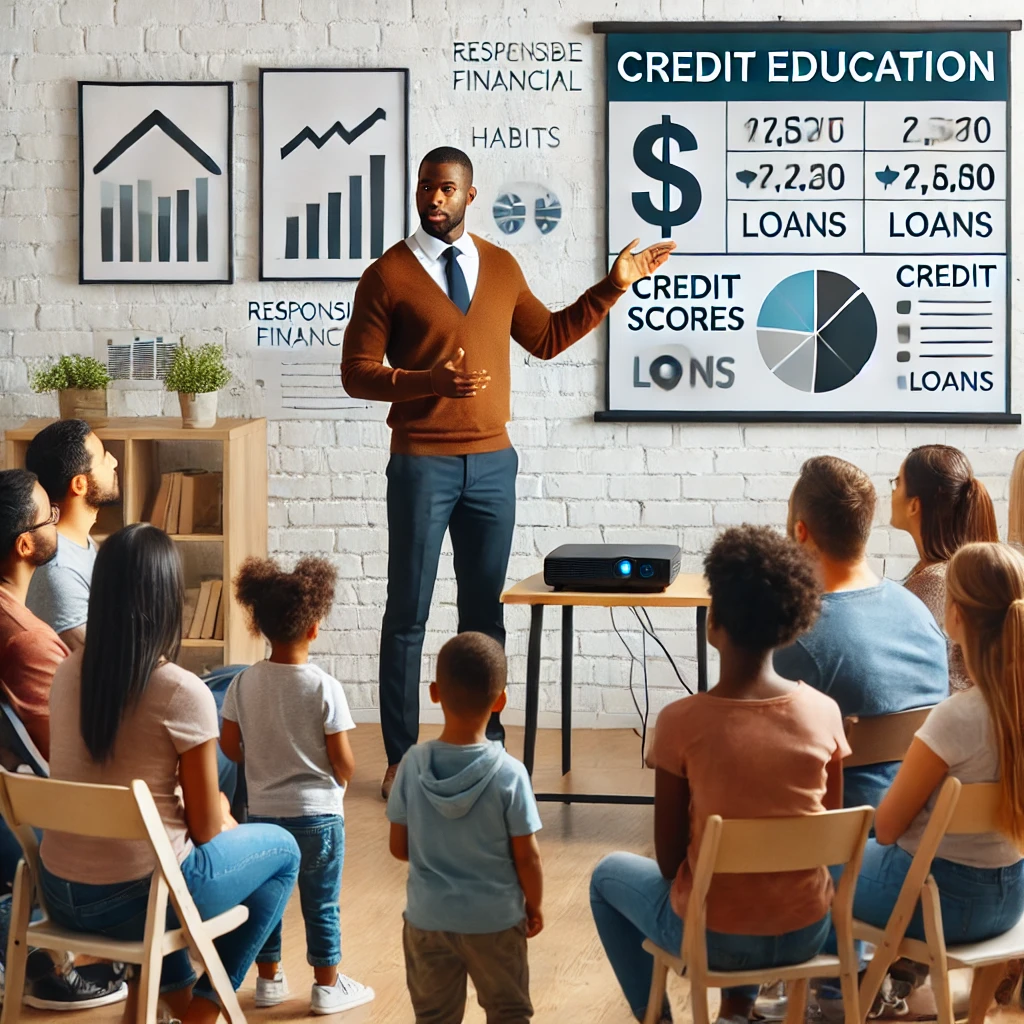
The Dangers of Bad Credit: Helping Kids Understand Smart Borrowing
Credit is a powerful financial tool—it can help you buy a home, start a business, or pay for college. But if used carelessly, it can turn into a financial trap.
For many people, bad credit doesn’t seem like a big deal—until they need to rent an apartment, get a car loan, or even apply for a job. That’s why it’s crucial to teach kids the dangers of bad credit early, so they can make smart borrowing choices before mistakes happen.

In this blog, we’ll cover:
✔ What bad credit is and how it happens
✔ The real-life consequences of a low credit score
✔ How to avoid bad credit and build smart financial habits
✔ Practical ways to teach kids responsible borrowing
By the end, your child will understand that credit is not free money, and they’ll be equipped to make better financial choices!
1. What Is Bad Credit?
Bad credit means you have a low credit score, usually because of:
✔ Missed payments – Not paying bills on time.
✔ Maxing out credit cards – Using too much available credit.
✔ Defaulting on loans – Not repaying money you borrowed.
✔ Applying for too many credit cards – Too many "hard inquiries" lower your score.
✔ Having no credit history – Lenders don’t trust people with no borrowing record.
📌 Lesson for Kids: Your credit score is like your financial reputation—the better it is, the more opportunities you have!
2. The Real-Life Consequences of Bad Credit
A low credit score can make life difficult in ways many kids and teens don’t realize. Here’s how:
🚗 Buying a Car Becomes Expensive
With bad credit, car loans have higher interest rates, meaning you’ll pay thousands more over time.
Some lenders won’t approve a loan at all.
📌 Example: Imagine two people buy the same car for $15,000.
✔ Good Credit: Pays $250/month at 3% interest.
❌ Bad Credit: Pays $400/month at 15% interest—a $5,000+ difference!
🏡 Trouble Renting an Apartment or Buying a Home
Landlords check credit scores before renting out apartments.
A bad credit score can mean higher deposits or even a denied application.
Mortgage lenders may reject your home loan or charge a high-interest rate.
📌 Lesson for Kids: Good credit = more freedom in choosing where you live.
💼 Harder to Get a Job
Many employers check credit scores as part of their hiring process.
A bad score could make it harder to get hired, especially for jobs in finance or management.
📌 Lesson: A poor credit score could hold you back from getting your dream job!
📈 Paying More for Everything
Bad credit affects everything from phone plans to insurance rates. Companies charge higher fees because they see you as a risky customer.
📌 Example:
✔ Good credit = Lower monthly phone bill
❌ Bad credit = Higher deposit or denied service
3. How to Avoid Bad Credit: Smart Borrowing Tips for Kids
1. Only Borrow What You Can Pay Back
If you don’t have the money to pay it back, don’t borrow it.
Example: If you can only afford a $50 video game, don’t charge $200 on a credit card!
📌 Tip: Credit is a tool, not free money.
2. Always Pay Bills on Time
Payment history makes up 35% of your credit score.
Even one missed payment can hurt your score for years.
📌 Tip: Set up automatic payments to never miss a due date!
3. Keep Credit Card Balances Low
Using too much credit at once makes lenders think you’re financially stressed.
Try to keep your balance below 30% of your credit limit.
📌 Example: If you have a $1,000 limit, don’t spend more than $300.
4. Build Credit Early (But Responsibly!)
Parents can add kids as authorized users on credit cards to build their score early.
Teens can start with a secured credit card (which requires a deposit).
📌 Lesson: Good credit takes years to build, but only a few mistakes to ruin.
4. Fun Ways to Teach Kids About Smart Borrowing
🎲 The “Credit Score Challenge” Game
Give kids “credit points” based on how well they manage pretend money.
If they pay on time, they earn higher credit limits.
If they miss payments, they lose points & face “higher interest rates.”
📌 Lesson: Good borrowing habits = better financial opportunities!
💡 The "Credit Card Interest Experiment"
Give kids $10 in pretend credit.
If they don’t "pay it back" in time, charge them interest (like an extra $2).
Show how debt grows when not managed properly.
📌 Lesson: Interest makes everything more expensive—pay off debt fast!
5. Credit Myths Every Kid Should Know
🚫 "You don’t need credit until you’re an adult." – False! The earlier you start building good credit, the better.
🚫 "Having a credit card means you’re in debt." – False! Credit cards only create debt if you don’t pay them off.
🚫 "You should never use credit." – False! Smart credit use helps build your financial future.
6. How Parents Can Help Their Kids Build Good Credit
✔ Talk about money early – Teach kids how credit works before they need it.
✔ Set financial goals – Encourage saving before borrowing.
✔ Monitor credit scores together – Use free apps like Credit Karma to track progress.
✔ Teach responsible credit use – Show kids how to borrow wisely and pay off debt.
📌 Tip for Parents: The best gift you can give your child is financial knowledge!
🚀 Teach Kids to Build GOOD Credit Today!
💡 Want to make credit education fun & simple?
📚 Download Kessai Fixes Credit, a digital story-based eBook that teaches kids how to manage credit wisely & avoid debt traps!
👉 Instant Download Available Now!
🔗 www.childrentowealth.com/product-details/product/kessaifixescredit
✅ Help your child build a STRONG financial foundation today!
